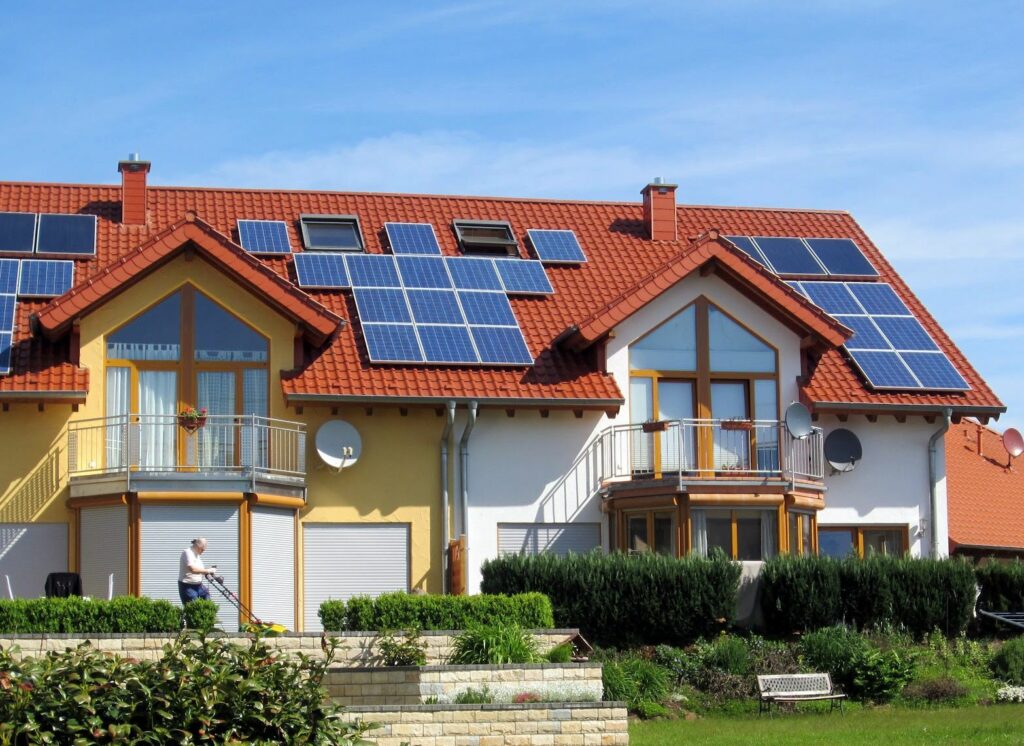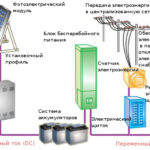Do you have a country house, but there is no way to stretch a power line (power line) to it? Or is it prohibitively expensive to connect to centralized power supply networks? Or maybe it is better to compare these 2 options – power supply from power lines and autonomous power supply?
At first glance, generating your own electricity from renewable energy sources is the perfect way to forgo monthly electricity bills. For many home owners, generating their own energy is a suitable solution to meet existing needs. However, such a solution requires a certain investment of both money and time both in purchasing and maintaining your system. Depending on your specific case, you may not save money in the end, but you will definitely gain independence from the grid, and at the same time you will generate energy that is environmentally friendly and does not harm the environment.
When is it more profitable to generate your own energy?
We carried out such calculations that showed that if the total power of your consumers (electrical loads) does not exceed several kW, the energy consumed is less than a few kWh per day, and the distance to the point of connection to the centralized power supply networks is more than several hundred meters, then an autonomous the power supply system for your home can be more profitable than connecting to the grid.
Having your own power plant is advisable when:
-
There is no centralized power supply network in your area, or the connection is connected with the laying of new power lines and the installation of an additional substation. When connecting to centralized power supply networks, you will have to pay the cost of connecting to networks (in the Moscow region it is more than 30,000 rubles for each kW of installed capacity), the cost of laying a low-voltage power line (the cost varies in different regions from 10,000 to 17,000 US dollars per 1 km), as well as pay for the consumed electricity at the rates of the power grids. Well, if there are several like you, and you can share the cost of connecting and building power lines. If you want to do it yourself, you will need a lot of money. More precisely, a lot. Moreover, even after paying the cost of the equipment (power lines, transformer substations, etc.), it will not belong to you – it will be on the balance sheet of the power grids. You are actually buying this equipment for the local power grid.
-
You want to be independent of your local power grid. In case of power failures, you are left without electricity, and maybe even without heat. Recently, due to climate change, cases of natural disasters that lead to accidents in electrical networks have become more frequent. Another factor is the limiting wear of equipment in power generators and electrical networks. Even without natural disasters, technological disasters are quite likely – for example, an accident at the Chaginskaya substation in the Moscow region, caused by wear and tear of equipment, led to a blackout in millions of homes for several days.
-
You want to reduce the impact of power generation on the environment. Climate change is largely associated with greenhouse gas emissions into the environment. Energy and transport are the main pollutants and sources of greenhouse gases. You can help our planet be cleaner and stop the destructive processes of climate change in your specific place.
-
The area where your home is located is rich in renewable energy resources. You will be surprised, but there are a lot of such regions in Russia. Reducing the cost of renewable energy equipment has made it possible to reconsider the boundaries of the cost-effective use of renewable energy sources in Russia.
-
You have strategic decisions that will allow you not to be left without energy when there is no renewable energy coming. This means that, due to the probabilistic arrival of renewable energy, it is necessary to have a backup source of energy, for example, a liquid-fuel electric generator. It is likely that it will almost always be idle at your place, but it is necessary to ensure a reliable power supply.
-
And finally, you do not lose hope that mechanisms for stimulating the generation of environmentally friendly energy will be introduced in our state. Such as exist now in the developed countries of Europe, the USA, China, India, Japan and many others.
ВIn addition to the above, you also need to:
- Explore legal and natural barriers to installing your own power plant
- Get prices and specifications from equipment manufacturers or suppliers
- If economic viability is the key, then you need to conduct an economic analysis considering all the factors that can affect the cost of the electricity you generate.
- Understand the basics of using renewable energy systems
- Consider combining your system with other energy sources, and consider all the ways you can improve energy efficiency in your home.
- Schedule maintenance. This is especially true for a system containing a diesel or petrol-electric unit (as the main or backup source of power supply). You will need to monitor the condition of your battery. Photovoltaic batteries require a minimum of maintenance.
Advantages of creating your own autonomous power supply system
- You do not need to pay for connection to centralized power supply networks and construction of power lines,
- You are not dependent on electricity prices.
- You are the owner of your equipment and can generate electricity when you want.
So, what should an autonomous power supply system consist of? Usually the composition of the power system is as follows

- liquid fuel generator ZhTG (benzo- or diesel-electric unit)
- photovoltaic battery
- wind power plant
- micro or small hydro power plant
Any of the listed sources can be used as the main one. The rest can be used as additional or backup.
- Rechargeable battery (AB). In systems based on renewable energy sources, due to the volatility of a renewable resource, this is a necessary element. Even if your main source is ZHTG, the presence of a rechargeable battery will allow you to turn it on for a short time during the day, and have electricity continuously.
- Inverter, i.e. DC to AC converter. Required if you have 220 V AC consumers, or if your consumers are at a considerable distance from the battery (losses in low voltage DC wires can be significant).
- AB charge controller. Necessary to prevent overcharging and overdischarging of batteries. Very often it is built into the inverter.
- Electrical equipment – panels, switches, circuit breakers, fuses, cables, grounding system, etc.
- Load. In an autonomous power supply system, only energy-efficient devices must be used. For example, the use of incandescent lamps is highly discouraged, as they consume 4 times more current than fluorescent lamps and 10 times more than LEDs. Despite the fact that energy-efficient devices are usually more expensive, their use can result in significant savings by reducing the power of the energy source and the capacity of the battery.
In order to increase the duration of the system’s offline operation, the uninterruptible power supply system usually contains one or more renewable energy sources. RES are used to generate electricity: solar panels (SB), wind power plants (WPP), MICROHPP and, sometimes, thermoelectric generators (TEG). These sources are connected to the battery through a charge controller that protects the battery from overcharging.
This article is taken from the site: http://www.solarhome.ru




